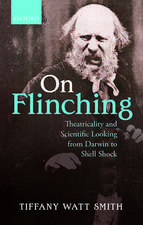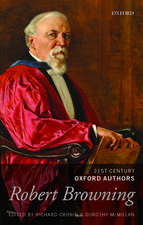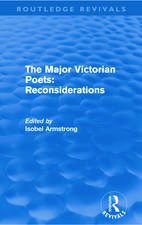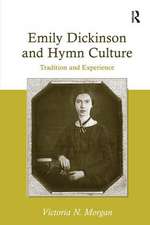Romantic Autobiography in England
Editat de Eugene Stelzigen Limba Engleză Hardback – 28 oct 2009
Preț: 1058.65 lei
Preț vechi: 1291.04 lei
-18% Nou
Puncte Express: 1588
Preț estimativ în valută:
202.57€ • 212.07$ • 167.62£
202.57€ • 212.07$ • 167.62£
Carte tipărită la comandă
Livrare economică 05-19 aprilie
Preluare comenzi: 021 569.72.76
Specificații
ISBN-13: 9780754663669
ISBN-10: 0754663663
Pagini: 232
Dimensiuni: 156 x 234 x 14 mm
Greutate: 0.57 kg
Ediția:1
Editura: Taylor & Francis
Colecția Routledge
Locul publicării:Oxford, United Kingdom
ISBN-10: 0754663663
Pagini: 232
Dimensiuni: 156 x 234 x 14 mm
Greutate: 0.57 kg
Ediția:1
Editura: Taylor & Francis
Colecția Routledge
Locul publicării:Oxford, United Kingdom
Notă biografică
Eugene Stelzig is Distinguished Teaching Professor of English at SUNY-Geneseo, USA
Recenzii
'Covering an exhilarating range of subjects, from canonical figures such as Mary Wollstonecraft and Thomas De Quincey to the less prominent such as Mary Hays, Joseph Severn, and the opera singer Mrs. Billington, this collection poses fascinating questions about autobiography in the Romantic Period. Taken together, these theoretically provocative essays return us to familiar texts from new angles, and introduce us to others.' Peter J. Manning, Stony Brook University, USA ’Eugene Stelzig's introduction to this collection of essays testifies to the irreducible messiness of the object of inquiry... The essays in this collection are consistently fresh and original in their treatments of an extraordinary range of forms of autobiographical practice.’ NBOL-19 ’One finds something exhilarating in virtually every take in this collection... Well arranged and accessible, these well-written explorations of unique, strategic self-invention reveal how memory, diffidence, trust, shame, guilt, and bravado all live within the imperative to write about one's selfhood. Stelzig (SUNY, Geneseo) provides an authoritative introduction... Recommended.’ Choice ’...offer[s] a rich menu of reflections on a wide range of autobiographical writing. ... [Stelzig] has curated a thought-provoking and often very engaging collection of essays.’ Review of English Studies '... [this book] provides insight into the Romantics’ complex relation with the public sphere, and their simultaneous efforts to control it whilst seeking to avoid being constrained by it in return... this collection forms a highly valuable addition to the literature on the genre.' History
Cuprins
General Editors’ Preface, Eugene Stelzig; Chapter 1 Introduction, Eugene Stelzig; Part 1 The Variety of Women’s Life Writing; Chapter 2 “My Heart Dissolved in What I Saw”: Displacement of the Autobiographical Self in Dorothy Wordsworth and Gertrude Stein, Kari Lokke; Chapter 3 The Gothic Structure of Mary Robinson’s Memoirs, Sharon M. Setzer; Chapter 4 Vice, Ugly Vice: Memoirs of Mrs Billington from her Birth, Susan Levin; Chapter 5 Writing Lives and Gendering History in Mary Hays’s FemaleScreen Memories and Fictionalized Autobiography: Mary Shelley’s Mathilda and “The Mourner” Fiction and Autobiographical Theories, Diane Long Hoeveler; Part 2 Male Self-Fashioning; Chapter 7 Wordsworth’s Cliff-Hanger, Joshua Wilner; Chapter 8 De Quincey as Autobiographer, Frederick Burwick; Chapter 9 The Friend of Keats: The Reinvention of Joseph Severn, Sue Brown; Part 3 Genres and Modes; Chapter 10 “I am not what I am”: Staged Presence in Romantic Autobiography, Stephen C. Behrendt; Chapter 11 Ned Ludd and Laboring-Class Autobiography, Kevin Binfield; Chapter 12 Wordsworth and the Ragged Legion; Or, The Lows of High Argument, Jasper Cragwall; Chapter 13 The Intimate Familiar: Essay as Autobiography in Romanticism, Christine Chaney;
Descriere
Taking into account the popularity and variety of the genre, this collaborative volume considers a wide range of English Romantic autobiographical writers and modes, including working-class autobiography, the familiar essay, and the staged presence. Major writers such as William Wordsworth, De Quincey, and Mary Shelley, and recent additions to the canon such as Mary Robinson, Dorothy Wordsworth, and Mary Hays are treated in this exploratory mapping of the field.
















